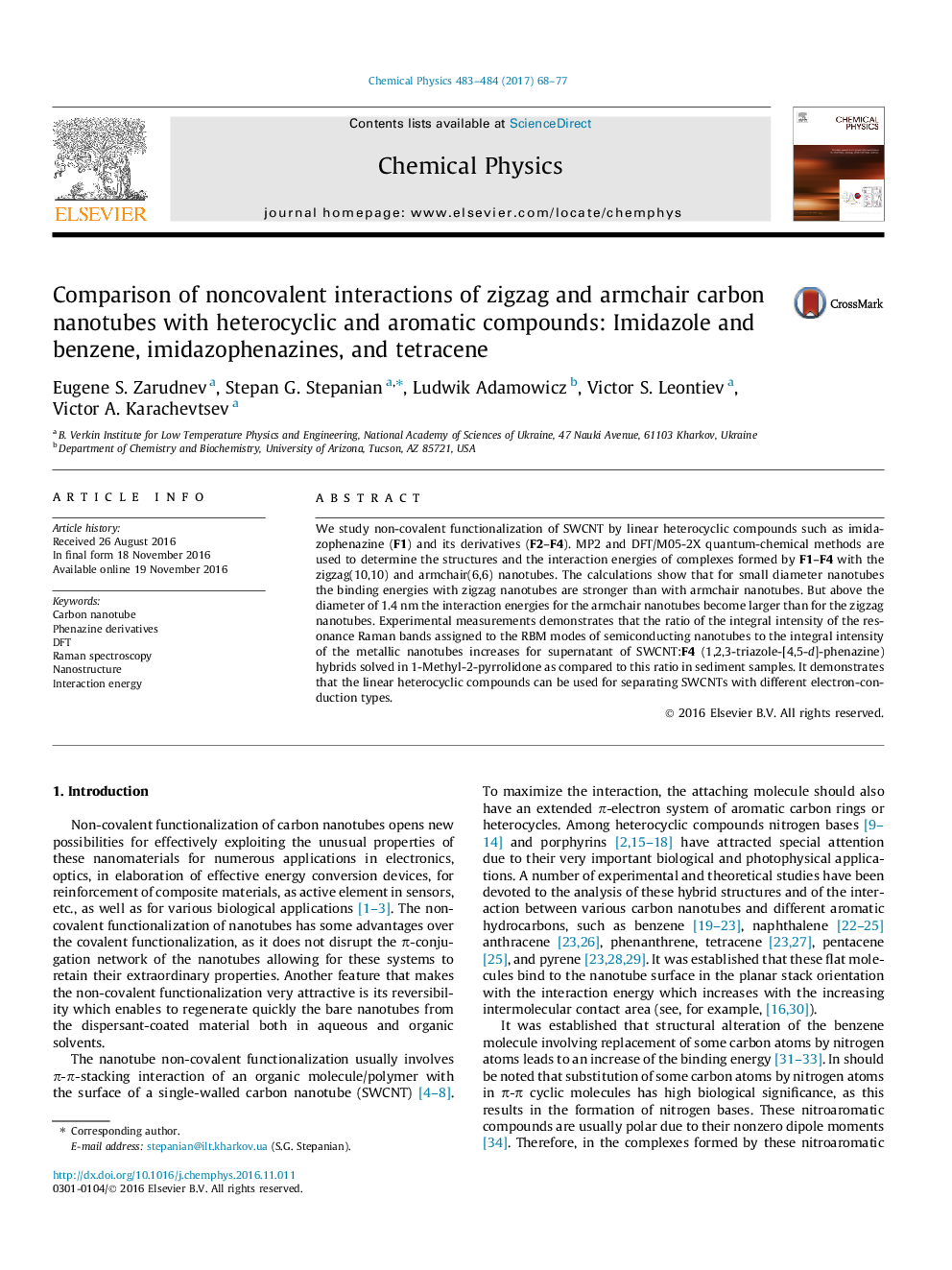| Article ID | Journal | Published Year | Pages | File Type |
|---|---|---|---|---|
| 5372707 | Chemical Physics | 2017 | 10 Pages |
â¢Substitution of C atom by N leads to selectivity in binding with certain nanotube species.â¢Heterocyclic compounds bound stronger with zigzag thin nanotubes.â¢Heterocyclic compounds bound stronger with armchair thick nanotubes.â¢Linear heterocyclic compounds prefer bound with small diameter semiconducting nanotubes.
We study non-covalent functionalization of SWCNT by linear heterocyclic compounds such as imidazophenazine (F1) and its derivatives (F2-F4). MP2 and DFT/M05-2X quantum-chemical methods are used to determine the structures and the interaction energies of complexes formed by F1-F4 with the zigzag(10,10) and armchair(6,6) nanotubes. The calculations show that for small diameter nanotubes the binding energies with zigzag nanotubes are stronger than with armchair nanotubes. But above the diameter of 1.4Â nm the interaction energies for the armchair nanotubes become larger than for the zigzag nanotubes. Experimental measurements demonstrates that the ratio of the integral intensity of the resonance Raman bands assigned to the RBM modes of semiconducting nanotubes to the integral intensity of the metallic nanotubes increases for supernatant of SWCNT:F4 (1,2,3-triazole-[4,5-d]-phenazine) hybrids solved in 1-Methyl-2-pyrrolidone as compared to this ratio in sediment samples. It demonstrates that the linear heterocyclic compounds can be used for separating SWCNTs with different electron-conduction types.
Graphical abstractDownload high-res image (120KB)Download full-size image
